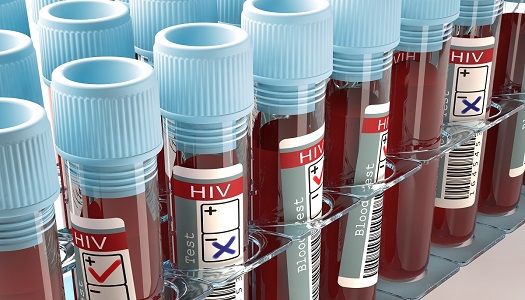Article
HIV Risk Higher Among Women Due to Greater Risk Behaviors
Author(s):
Women are more likely to participate in riskier sexual behaviors that can cause HIV-infection, with non-Hispanic black women representing the highest-risk.

Women represent roughly 40% of new HIV infections due to participation in sexual behaviors that carry greater risk, according to a group of experts from the U.S. Centers for Disease Control and Prevention (CDC).
Although infection rates vary by racial, social and demographic groups, the study showed that having vaginal, oral, or anal sex with multiple partners concurrently, having non-monogamous sex partners, and using condoms inconsistently raised the risk of HIV transmission. Understanding why these behaviors occur and why non-Hispanic black women and Hispanic women represent a higher proportion (62% and 17%, respectively) of the new diagnoses is needed before more effective prevention strategies can be created, the study authors added.
“The causes of these disparities are complex and include myriad demographic, individual, social, and contextual factors associated with the environment in which HIV risk behaviors occur,” wrote Tiffany M. Aholou, PhD, Behavioral Scientist in the CDC’s Division of HIV/AIDS Prevention and co-authors.
These contextual factors can include a high-risk milieu, a low-male-to-female sex ratio, poverty, low educational levels, and lack of access to health. These factors make it more common for one partner to know another’s HIV status, and also make it more likely for someone to encounter a partner with HIV and to become infected even without risky sexual behavior, the study said.
Among the 13,500 sexually active women aged 18 to 44 who were surveyed from June 2006 to September 2013, in the previous 12 months:
- 6.7% had 3 or more opposite sex partners.
- 4.6% had an STD.
- 1.1% had concurrent opposite sex partners.
- 10.3% perceived their sex partners were non-monogamous.
- 21.1% said they had used a condom the last time they had vaginal or anal sex.
White women surveyed (17% of the study group) were less likely to use a condom in their last sexual encounter as compared with non-Hispanic black women (34%), and Hispanic women (23%). The study suggested that since the non-Hispanic black women surveyed more often had non-monogamous sex partners, they might more often use condoms to protect themselves, and that younger, single women who lived in urban/suburban areas were also more likely to use protection.
Older women (35 to 44 years old) who were 2 times less likely to use a condom than 18- to 24-year-olds, might neglect to protect themselves because they were more interested in having children or perceived less risk, the study said.
“Research has shown that community-level interventions such as condom distribution programs increase condom availability, accessibility, and acceptability by removing cost barriers and providing condoms in user-friendly settings; these programs can strengthen condom use behaviors,” study authors added.
Multiple concurrent sex partnerships were significantly less likely among Hispanic women than among non-Hispanic white women, according to the study’s survey, but significantly more likely among non-Hispanic black women. The increase among non-Hispanic black women highlighted the role of social and structural factors, such as the low male-to-female sex ratio and mass incarceration, in increased HIV risk in non-Hispanic black women, the study said. That “underscore[s] the importance of incorporating more-informed sex partnering and financial independence strategies (e.g. microenterprise) into HIV prevention interventions for women,” authors added.
Surveyed women who were unmarried/single, bisexual, had previous treatment for an STD in the last 12 months, had three or more sex partners, or who were non-Hispanic black were more likely to perceive that their sex partners were non-monogamous, according to the study.
“[A]n enhanced understanding of factors that promote women’s sexual risk behaviors, and development of interventions that improve protective behaviors, could help to further decrease HIV among U.S. women,” the co-authors concluded.
More Like This >>>
HIV Causing Diminished Physical Function for Elderly Americans
C-Sections Help Prevent HIV Transmission to Infants, But May Increase Future Health Risks
C. difficile in Infancy Could Cause Allergic Diseases in Childhood





